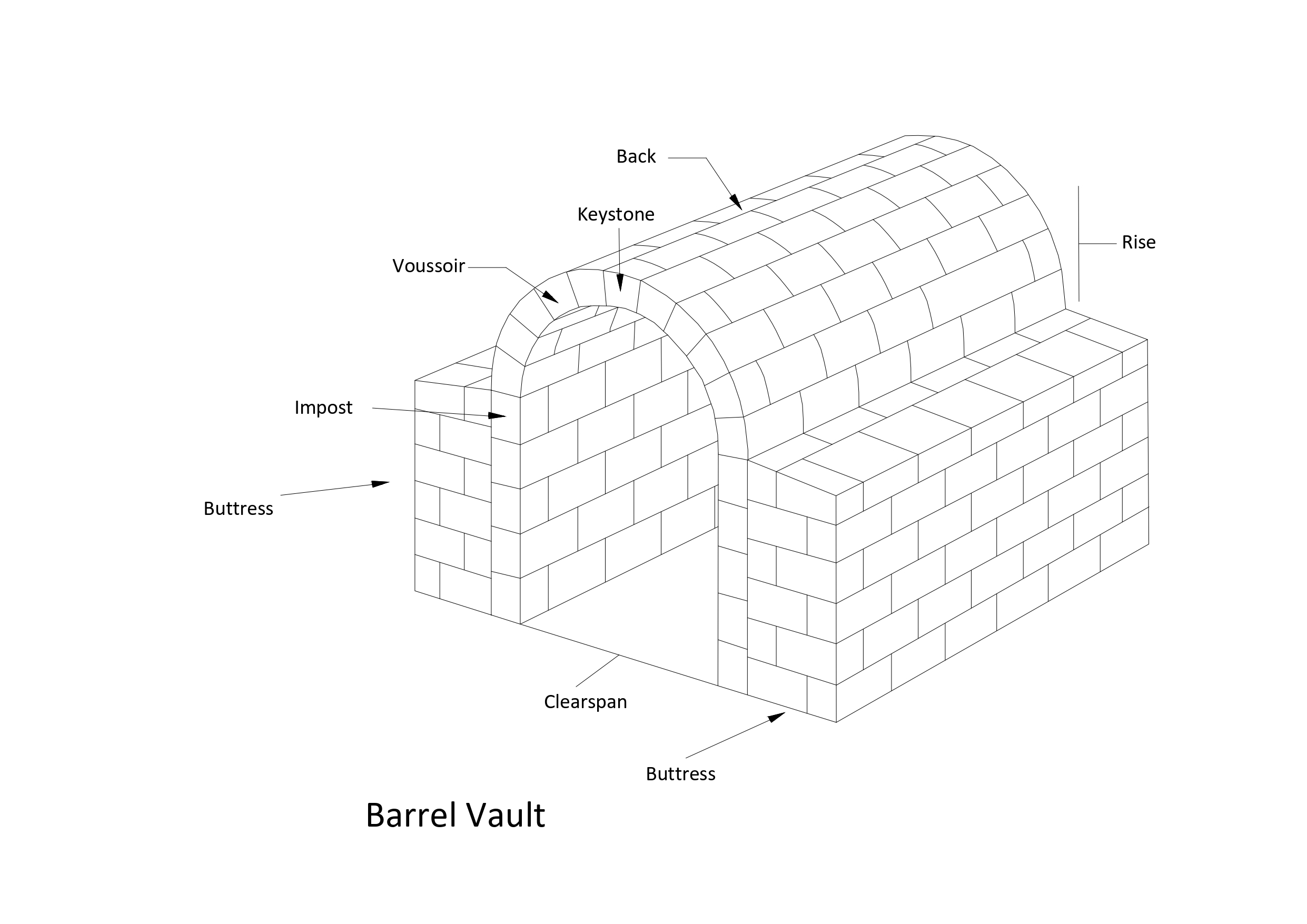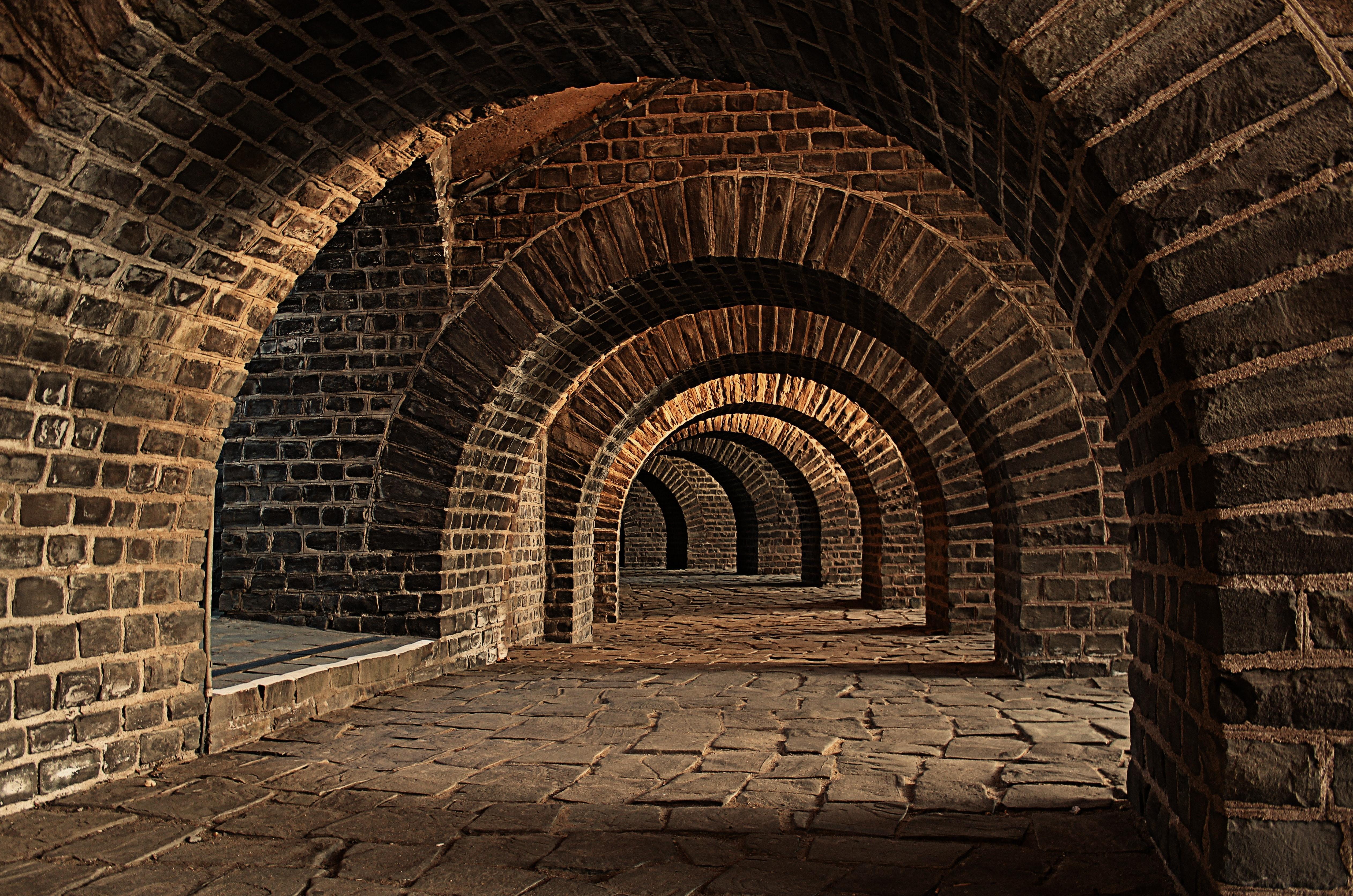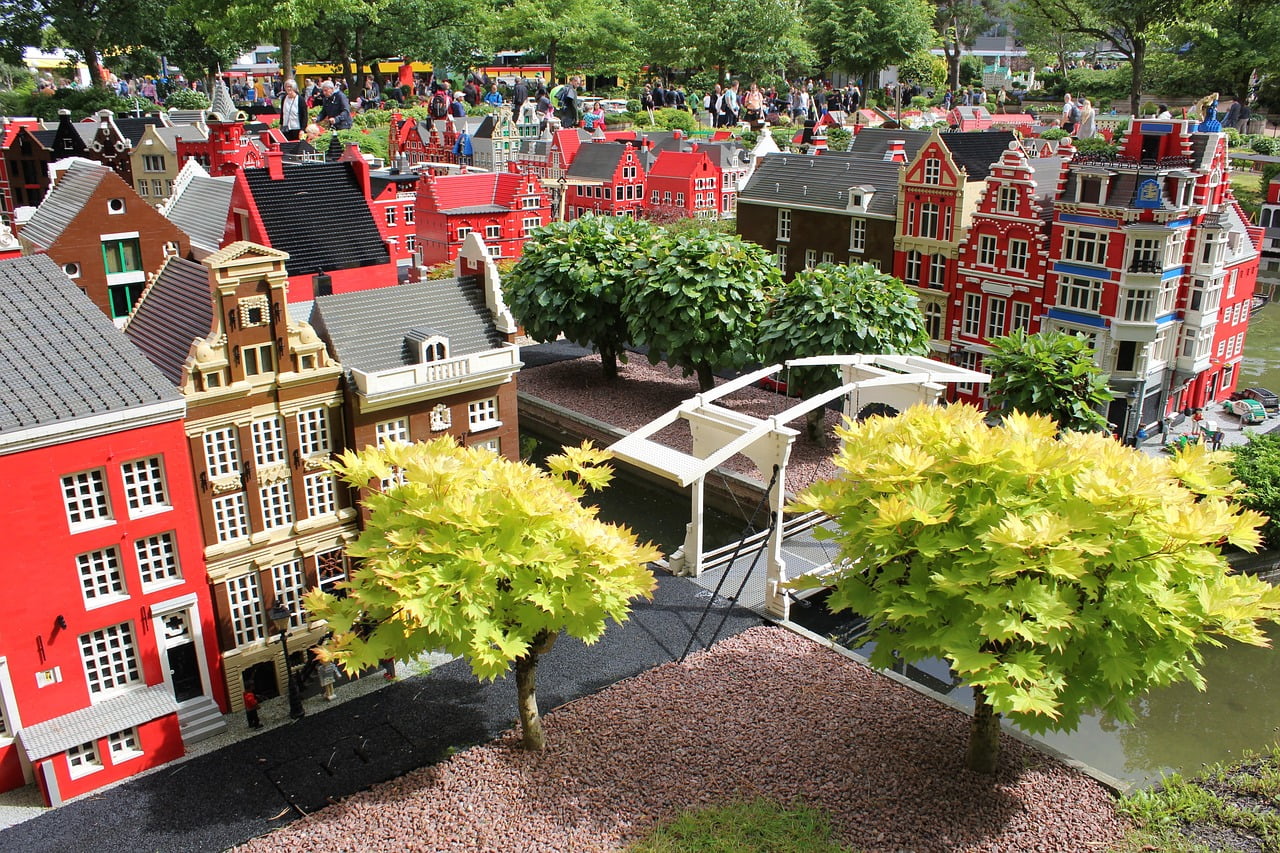What is a barrel vault?
A barrel vault is a basic type of vault or extruded arch. Although barrel vaults are a continuous extrusion of a series of arches, some vaults include decoration along the surface rather than a simple extrusion. It is sometimes referred to as a tunnel vault or a wagon vault. The curves are often round, giving the pattern a semi-cylindrical look.
In architecture, barrel vaults are made up of a series of semi-circular arches, and these arches are the most important component for supporting a large amount of weight. All the thrust and weight are equally distributed from the top of the arch in a downward direction. Additional strength can be provided to these vaults by supporting columns or parallel walls. These vaults are also arranged in a side-by-side continuous shell to give more support [3]. These vaults are the perfect architectural element to highlight any entry, pathway, hallway, or theater room. [1]
The word “barrel” clarifies its meaning: it resembles a barrel that has been laid down and sliced in half along its length; the top appears rounded, while the bottom is flat. [4] Barrel vaulting in architecture is also known as tunnel vaulting, and it was first extensively used in the Ancient Roman Empire for stone structures. The Romans used these vaults in their major structures, such as the Colosseum, which is situated in Italy. These vaults were suitable for very large and heavy structures because they could carry and channel a great deal of weight. This is why it was extensively used by the Romans at that time.
History of the Barrel Vault in architecture
Barrel vaults were used and constructed by early civilizations from the Indian Indus Valley, ancient Egypt, and Mesopotamia. But it wasn’t so popular during that period and doesn’t have a high impact on these civilizations. The first importance given to these vaults was by the Persians and the Romans; they had a great interest in the barrel vault and used it extensively in their buildings. The strength of timber and wood made brick or stone such an important material for the construction of barrel vaults. [2] Stone was the most commonly used material for barrel vault construction at the time, and it has since been replaced by other modern materials such as steel and others in modern architecture.[4] In ancient times, barrel vaults were used to construct underground structures like mortuaries, drains, and sewers. [2]
Examples of barrel vaults in ancient times.
- The earliest known examples can be found beneath the Sumerian ziggurat at Nippur in Babylonia, which was built from fired bricks and mortared with clay.[2]
- extensively used in ancient Rome for stone structures like cisterns and aqueducts, and some parts of buildings such as the Colosseum. [3]
- The oldest tunnel vaults in Egypt are found at Requagnah and Denderah. [2]
- In churches, they were used extensively because wood can catch fire, and it was not safe to use it beneath the structure because it could destruct the whole thing. This is the main reason the Romans extensively used barrel vaults in churches made of stone. A great example of this is St. Peter’s Basilica in Rome, where we can find the world’s biggest barrel vault with a span of over 27 meters (89 feet) wide. [2] [5]
- Other examples include the church of Cluny Abbey, the Egyptian mortuary in Ramesseum, and the famous cloisters of New York City. [5]
- Other early barrel vault constructions can be found in Europe, Turkey, Morocco, and other regions. [2]
Barrel Vault Construction Elements
The most important structural element of any barrel vault is its series of arches, which carry all the horizontal and vertical load of the vault. A detailed illustration of the barrel vault is shown in the figure below. As you can see, the most important element of this vault is its arch, which is supported by other elements. [4]
- Keystone
- Voussoirs
- Back
- Impost
- Intrados
- Rise
- Clearspan
- Abutment

The architecture of barrel vault
Barrel vaults carry lots of outward pressure downward because of the structure above them, so they must be able to withstand all the vertical and horizontal loads. [3] The series of arches that support all of the load coming from above is how it survives all of the load. The load and thrust are distributed evenly from the top of the arch to the bottom. The keystone is reasonable to hold together the components of an arch and make it structurally strong. These components supported the entire load and assisted in keeping the barrel vault stable. [4] Additional strength can be provided by the columns, beams, side anchors, or parallel walls. These can help in distributing the stress generated by the barrel vault. [3]
Design issues in the Barrel Vault
The pressure generated by the lower part of the barrel vault is very high as it carries all the structural load coming from above, resulting in the breakdown of the vault. Therefore, we need to provide additional supports like side anchors or parallel walls.
To support the structural load of the vault, we made thicker walls, which increased the length of the vault. [5]
Materials used for the construction of barrel vaults
- In ancient times, brick (dried terracotta) and stone were the primary materials for the construction of barrel vaults.
- Stones like granite, schist, and limestone were also used, depending on the local availability of these materials.
- For the mortar and filling work, gypsum, lime, broken brick pieces, clay, broken pots, coal debris, and other materials were used. [5]
- Steel, brick, and stone are the most commonly used materials for the construction of these vaults in modern times. [2]
Advantages of using barrel vault in architecture
- A barrel vault provides the decorative ceiling option and makes the space seem large and spacious. [5]
- Provide additional openings to catch natural light and air inside the structure.
- Generate height variations in a structure.
Disadvantages of using barrel vault in architecture
- The lower part of the vault becomes vulnerable and can result in destruction.
- We can’t create a small hole or window on the walls of barrel vaults as their walls are structurally weak.
- To support these vaults, which become very deep in three-dimensional space, a series of arches is required. (We’ll need groin vaults to do this.) [5]











